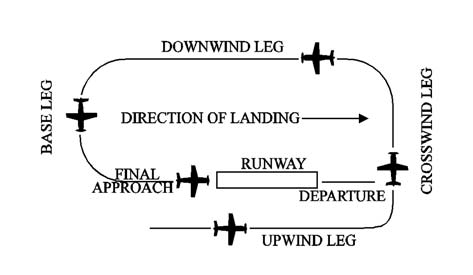
When it comes to the path of the wind, the terms “upwind” and “downwind” can be employed in various fields, including aviation. In general, “upwind” signifies the path from which the wind originates, while “downwind” refers to the path in which the wind is blowing.
- First and foremost, it is crucial to acknowledge that the wind path indicates the path from which the wind is blowing. For instance, if the wind is blowing from the north towards the south, it is considered a north wind;
- When referring to wind direction, “upwind” denotes the path from which the wind is
coming, while “downwind” signifies the path in which the wind is blowing.
Therefore, if an individual is facing north and the wind is blowing towards their back, it means the wind is coming from the south. In this scenario, the upwind path is south, and the downwind path is north.

Upwind
- Upwind represents the path from which the wind is originating.
- It is also the leg of an airport traffic pattern where an aircraft flies directly into the wind, typically the initial leg.
- Moreover, it refers to the path from which the wind is blowing.
Downwind
- Downwind corresponds to the path in which the wind is blowing.
- Additionally, it is the leg of an airport traffic pattern in which an aircraft flies parallel to the runway, opposing the path of landing or takeoff.
- Furthermore, it indicates the path towards which the wind is blowing.
In aviation, these terms are applicable to describe both the traffic pattern and the wind’s direction.
- During takeoff and landing, an aircraft usually follows a rectangular traffic pattern around the runway, consisting of four legs: upwind, crosswind, downwind, and base.
- Pilots need to comprehend the wind path and make adjustments to their approach accordingly.
For instance, during takeoff, an aircraft gains lift by taking off into the wind, which also reduces the required takeoff distance. When landing, pilots typically aim to land into the wind, decreasing the ground speed and ensuring a more stable approach.
Outside of Aviation
Apart from aviation, the terms upwind and downwind find applications in other domains such as hunting and sailing.
Hunters utilize wind paths to avoid detection by their prey, and sailing against the wind (upwind) can present more challenges compared to sailing with the wind (downwind).
To wrap up
In conclusion, comprehending the principles of upwind and downwind is paramount across diverse disciplines, encompassing aviation, hunting, sailing, and meteorology. Whether it entails discerning wind orientation for precise navigation, fine-tuning flight patterns for optimal efficiency, capitalizing on strategic advantages while hunting or sailing, or analyzing the trajectory of air in meteorological phenomena, understanding the disparity between upwind and downwind empowers individuals to make informed decisions and execute apt actions. By harnessing this knowledge, individuals can leverage the dynamic forces of the wind, navigating through complex scenarios with finesse, acumen, and enhanced dexterity, ultimately achieving superior outcomes.